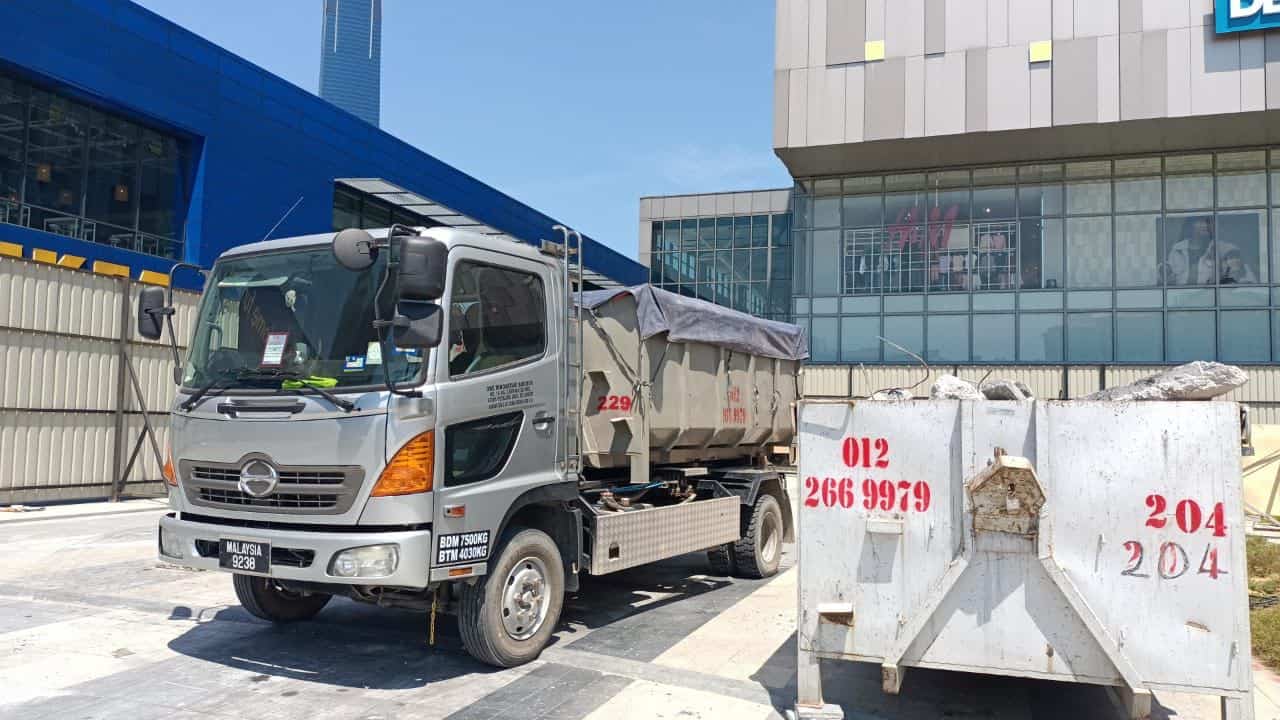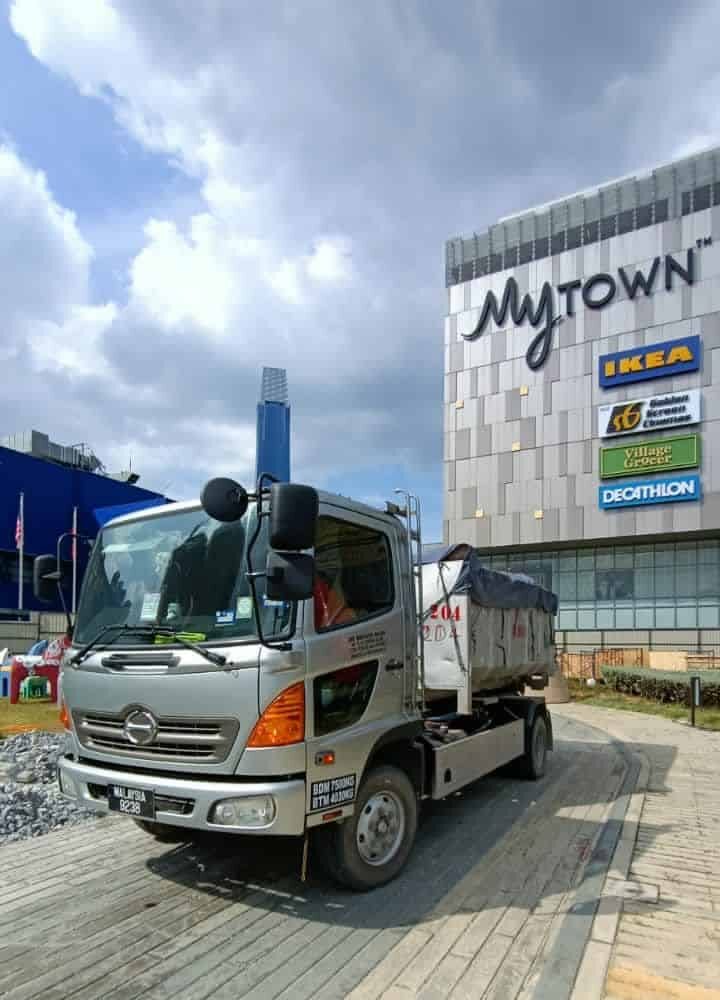RORO BIN RENTAL
Find The Right Size For Your Project

Small Roro Bin
Dimensions: 12′ (L) X 6′ (W) X 2.5′ (H)
Best Use: Heavy construction and demolition waste like concrete and soil.

Large Roro Bin
Dimensions: 12′ (L) X 6′ (W) X 4′ (H)
Best Use: Light-weight construction, industrial, commercial waste, furniture, household bulky waste, trees and etc.

Domestic Roro Bin
Dimensions: 12′ (L) X 6′ (W) X 4′ (H) with roof
Best Use: Domestic food waste (Organic waste).

Extra Giant Roro Bin
Dimensions: 16′ (L) X 8′ (W) X 6′ (H)
Best Use: Light-weight construction, industrial, commercial waste, furniture, household bulky waste, trees and etc.

Giant Roro Bin
Dimensions: 14′ (L) X 7′ (W) X 5.5′ (H)
Best Use: Light-weight construction, industrial, commercial waste, furniture, household bulky waste, trees and etc.
WHAT MAKES US DIFFERENT ?

Value Price

Express Service

Licensed Under Local Authorities

Quick Scheduling
TESTIMONIALS
OUR CLIENTS







PROJECT REFERENCE









Construction Waste Disposal Service
Understanding Construction Waste Disposal Service
Construction projects, whether big or small, produce a massive amount of waste. This waste can include everything from broken bricks and drywall to hazardous chemicals and metals. With construction projects booming worldwide, managing this waste responsibly is crucial to reduce environmental impact and promote sustainability in the construction industry.
Introduction to Construction Waste Disposal
Proper waste disposal in construction sites is often overlooked, but it’s essential for a safe and eco-friendly project. This service ensures that the waste generated on construction sites is managed, transported, and disposed of responsibly. So, why does construction waste disposal matter, and how can it benefit both the environment and the construction industry?
Why Is Construction Waste Disposal Important?
Without proper disposal, construction waste can harm local ecosystems, increase pollution, and put public health at risk. Moreover, waste mismanagement can lead to heavy fines and penalties due to strict regulations around construction waste disposal.
The Growing Need for Sustainable Construction Practices
As cities expand and new buildings go up, the demand for sustainable practices grows. By implementing proper waste disposal methods, the construction industry can contribute to a cleaner, greener planet.
Types of Construction Waste
Understanding the different types of construction waste is vital to determining the right disposal methods. Waste is typically categorized as hazardous or non-hazardous, each requiring specific handling and disposal protocols.
Hazardous Waste
Hazardous construction waste can pose significant risks to human health and the environment if not disposed of properly.
Examples of Hazardous Construction Waste
- Asbestos-containing materials
- Lead-based paints
- Chemical solvents
- Treated wood
Non-Hazardous Waste
This type of waste is less dangerous but still requires responsible disposal.
Examples of Non-Hazardous Construction Waste
- Concrete and bricks
- Metal scraps
- Glass
- Plastic and packaging materials
Challenges in Construction Waste Disposal
Handling construction waste is complex due to several challenges that companies face daily.
Environmental Impacts of Construction Waste
Construction waste, if not disposed of correctly, can lead to soil and water contamination, air pollution, and a general decline in local biodiversity.
Health and Safety Risks for Workers and Communities
Improper waste disposal can put workers and local communities at risk of exposure to harmful substances, increasing health hazards.
Legal and Regulatory Challenges
Construction waste disposal is subject to strict regulations. Failure to comply can lead to legal issues, fines, and damage to a company’s reputation.
Benefits of a Construction Waste Disposal Service
A reliable waste disposal service offers many advantages for construction companies, communities, and the environment.
Time and Cost Savings for Projects
Efficient waste disposal services streamline the process, reducing delays and avoiding costly penalties.
Environmental Protection and Sustainability
Responsible waste disposal reduces pollution, conserves natural resources, and helps protect ecosystems.
Compliance with Local Regulations
Hiring a professional service ensures that all waste disposal processes align with local laws, avoiding legal complications.
Key Components of an Effective Construction Waste Disposal Service
A good waste disposal service will include various stages and processes to ensure safe, responsible waste handling.
Waste Assessment and Management Plan
This involves assessing the types and amounts of waste generated, allowing for better planning and reduction measures.
Sorting and Recycling Processes
Sorting waste at the source is crucial to maximize recycling efforts and reduce landfill use.
Safe Transportation and Disposal of Waste
Reliable transportation to designated disposal or recycling sites ensures that waste is handled correctly and safely.
Steps in the Construction Waste Disposal Process
Each construction project follows a step-by-step approach to ensure waste is disposed of responsibly.
Site Waste Assessment
Identifying the types and amounts of waste generated on-site helps in formulating a tailored waste management plan.
Waste Collection and Segregation
Proper segregation of waste allows for easier recycling and disposal while keeping hazardous materials separate.
Disposal or Recycling of Waste
Waste is either disposed of or recycled based on its type and reusability, promoting a circular economy within the industry.
Sustainable Waste Disposal Methods in Construction
With sustainability becoming a major focus, there are several ways construction companies can dispose of waste in an eco-friendly manner.
Recycling and Reuse of Materials
Materials like concrete, metal, and wood can often be recycled and reused, reducing the need for raw materials.
Energy Recovery from Waste
Some types of waste can be incinerated to produce energy, offering an alternative to landfill disposal.
Landfill Diversion and Minimization
Landfills are a last resort for waste disposal. Effective sorting and recycling significantly reduce the waste sent to landfills.
Common Mistakes in Construction Waste Disposal
Avoiding these common mistakes can make waste disposal more efficient and eco-friendly.
Failing to Sort Waste Properly
Failing to separate hazardous and non-hazardous waste can lead to environmental issues and regulatory fines.
Ignoring Local Regulations
Skipping necessary legal requirements can result in penalties and project delays.
Not Recycling Reusable Materials
When recyclable materials end up in landfills, valuable resources are wasted, and environmental harm increases.
Cost of Construction Waste Disposal Services
The cost of waste disposal varies based on several factors.
Factors That Affect the Cost of Disposal Services
Project Size and Location
Larger projects and remote locations may have higher disposal costs due to logistics and volume.
Type and Volume of Waste
Hazardous waste disposal generally costs more due to additional safety and handling requirements.
How Construction Waste Disposal Services Support Sustainability Goals
By managing waste responsibly, construction companies can make significant strides toward sustainability.
Reducing Carbon Footprint
Minimizing waste reduces the greenhouse gases associated with landfill disposal and production of new materials.
Promoting Circular Economy in Construction
Using recycled materials and waste-to-energy processes supports a circular economy, benefiting both the industry and the environment.
Encouraging Green Building Practices
Construction waste disposal services align with green building principles, which aim to minimize a project’s environmental impact.
Construction waste disposal services are essential for any project aiming to be both efficient and eco-friendly. By choosing the right service provider and following sustainable practices, construction companies can protect the environment, ensure worker safety, and stay compliant with regulations. The benefits extend beyond the site, supporting a healthier planet for future generations.


